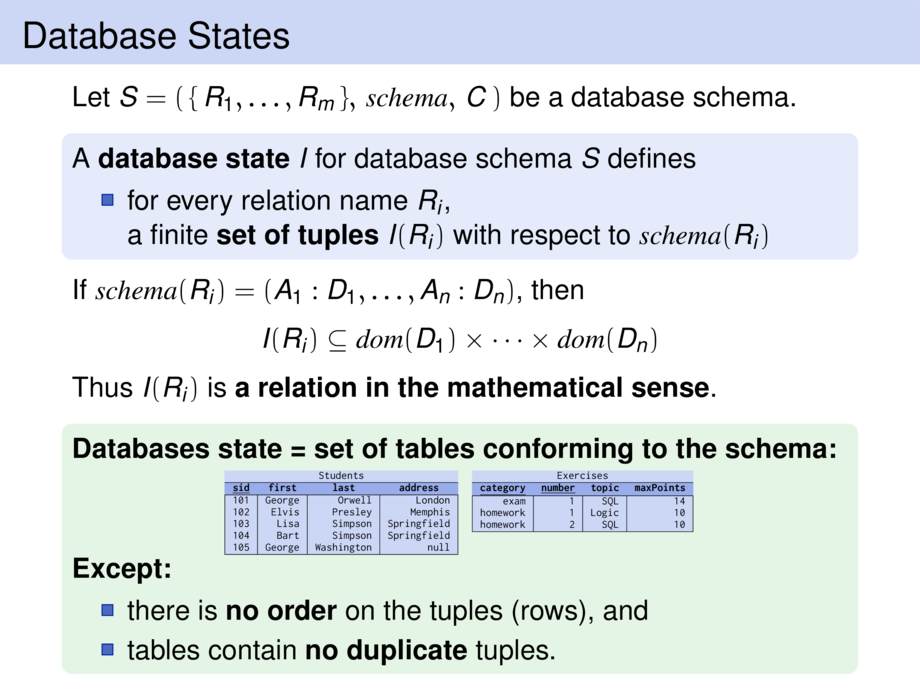



































































































20/77
\begin{frame}
\frametitle{Database States}
Let $S = (\, \{\,R_1, \dots, R_m\,\},\, \var{schema},\, C \,)$ be a database schema.
\begin{block}{}
A \textbf{database state} $I$ for database schema $S$ defines
\begin{itemize}
\item
for every relation name $R_i$, \\
a finite \textbf{set of tuples} $I(R_i)$ with respect to $\schema{R_i}$
\end{itemize}
\end{block}
If $\schema{R_i} = (A_{1}:D_{1},\dots,A_{n}:D_{n})$, then
\begin{talign}
I(R_i) \subseteq \dom{D_{1}} \times \cdots \times \dom{D_{n}}
\end{talign}
Thus $I(R_i)$ is \emph{a relation in the mathematical sense}.
\pause
\begin{exampleblock}{}
\emph{Databases state = set of tables conforming to the schema:}
\begin{center}\vspace{-2.5ex}
\scalebox{.5}{{\ttfamily\tableStudents\tableExercises}}
\vspace{-1.5ex}
\end{center}
\emph{Except:}
\begin{itemize}
\item there is \emph{no order} on the tuples (rows), and
\item tables contain \emph{no duplicate} tuples.
\end{itemize}
\end{exampleblock}
\end{frame}

